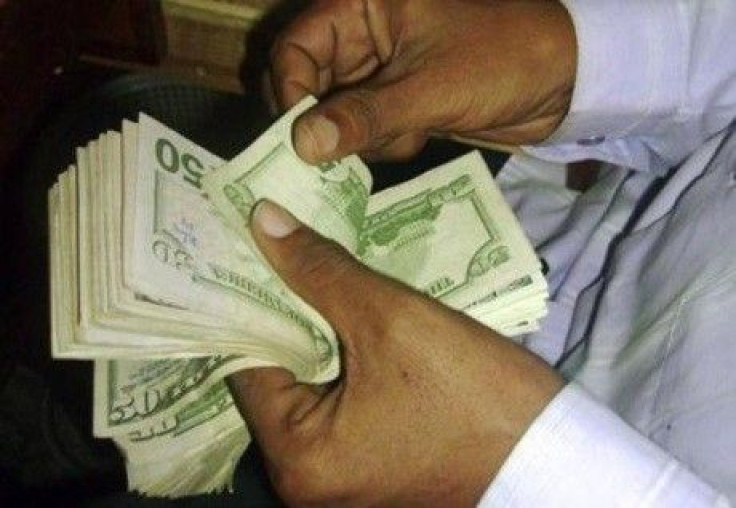International Aid Money Disappeared, Diverted Or Squandered In Somalia: Report

A new report from the World Bank reveals a pattern of aid mismanagement in Somalia. In 2009 and 2010, about $130 million in funds delivered to the transitional government seem to have disappeared into thin air.
According to the Voice of America, the report accused the government, which is backed by the United Nations, of vastly under-reporting its revenues. It suffers from a lack of transparency, having no established accounting system and no disclosure of financial statements.
For the poverty-stricken population of Somalia, the mismanagement of sorely needed international aid is a serious affront that must be addressed immediately.
Somalia's former finance chief, Abdirizak Fartaag, explained to VOA that many donations go straight to officials rather than to the country's central bank.
What we did observe is that in relationship to the bilateral funds, donations often are given directly to individual government members and do not exactly specify exactly who and how, he said. But such donations appear to have happened. But we did find and did make observations that this money is not fully deposited in the central bank; sometimes it's only partly.
The World Bank report was circulated in Istanbul at a two-day conference on Somalia. On Thursday and Friday, hundreds of Somali politicians and international dignitaries met there to discuss the future of the East African country as it works to install a permanent government over the next three months.
By August 20, Somali officials hope that a newly elected government will lead a unified Somalia away from its tumultuous past.
But if this transition is to be successful, it must be ensured that international aid money achieves its intended purpose. Speaking in Istanbul on Friday, United Kingdom Foreign Minister William Hague told the BBC that an oversight committee in Somalia was long overdue.
The details of this need to be finalized with the government of Somalia -- and frankly, I was hoping it could be done by now, by this conference in Istanbul. If it is not signed here ... then it needs to signed in the next few weeks, he said.
The challenges facing Somalia have persisted for decades; it has been a failed state since 1991, when dictatorial president Siad Barre was overthrown by warring factions that subsequently failed to unite the country. Since then, the country of nearly 10 million people has been burdened with famine, drought, conflict, piracy, Islamist militants and widespread poverty.
In the south, the terrorist group Al Shabab has pursued a campaign of violence over the past several years. In the north, which is comparatively stable, a high degree of autonomy has prompted talks of secession. Along the eastern coast, pirates make a living committing theft and kidnapping. And in the capital city of Mogadishu, African Union troops from Uganda, Burundi and Djibouti address security concerns that the transitional government cannot handle on its own.
In addition, the entire Horn of Africa region was devastated by a famine in 2010 and 2011 that killed tens of thousands of people.
During a London conference in February, representatives from 55 countries and international organizations worked to establish a unified international plan to address Somalia's endemic problems. Millions of dollars in aid were promised, and the number of African Union troops in Somalia was boosted from about 12,000 to more 17,000 in order to ramp up the efforts to flush Al Shabab militants from the country.
But now that the efficacy of international aid has been called into question, attendants of the conference in Istanbul are looking for ways to address discrepancies before more funds disappear.
Part of the problem is a lack of comprehensive data on the country. In March, the World Bank reported that there are some signs of progress there, including modest GDP growth of 2 to 3 percent over the past decade. But even that figure may be skewed since it reflects a country-wide average and does not take into account stark divisions within the country. Northern areas of Somalia, including Somaliland and Puntland, are significantly more stable than central and southern areas of the country. Those northern regions have operated with a high level of de facto autonomy for years.
Somalia's apparent economic growth could be attributed to northern progress or to niche markets, not necessarily reflecting the reality in areas where poverty is most pronounced.
Whatever growth has happened has not translated into much development, explained the March report. Poverty remains rampant: 43 percent and 73 percent of the population live below $1 and $2 per day, respectively. In GDP per capita terms, Somalia is close to the bottom of African nations. On two critical outcomes for health -- child mortality (180 deaths per 1,000 births) and education (average primary school enrollment at 22 percent) -- it performs dismally. This is in spite of massive external inflows of cash in the form of remittances, [official development assistance] and military assistance.
This week's World Bank report has made it clear why this cash has not yet made its intended impact. Going forward, domestic politicians and officials abroad will be tasked to keep a closer eye on aid efforts in Somalia, and the establishment of an oversight institution will be one more responsibility for Somali politicians as they cobble together their first permanent government in over 20 years.
© Copyright IBTimes 2024. All rights reserved.












